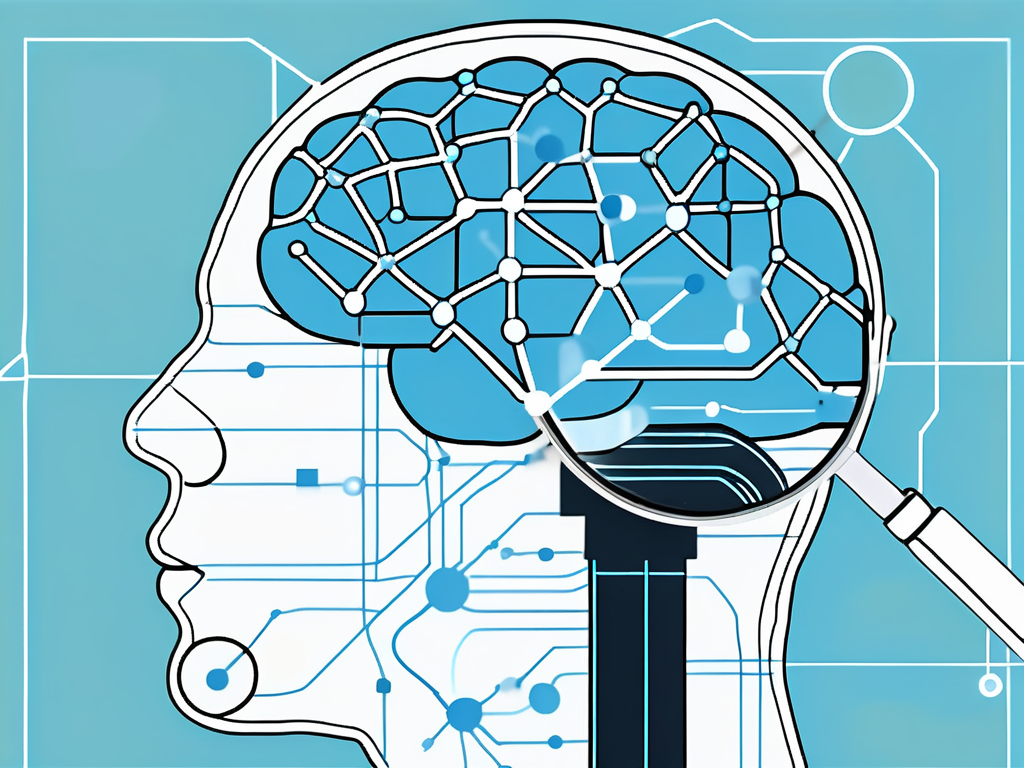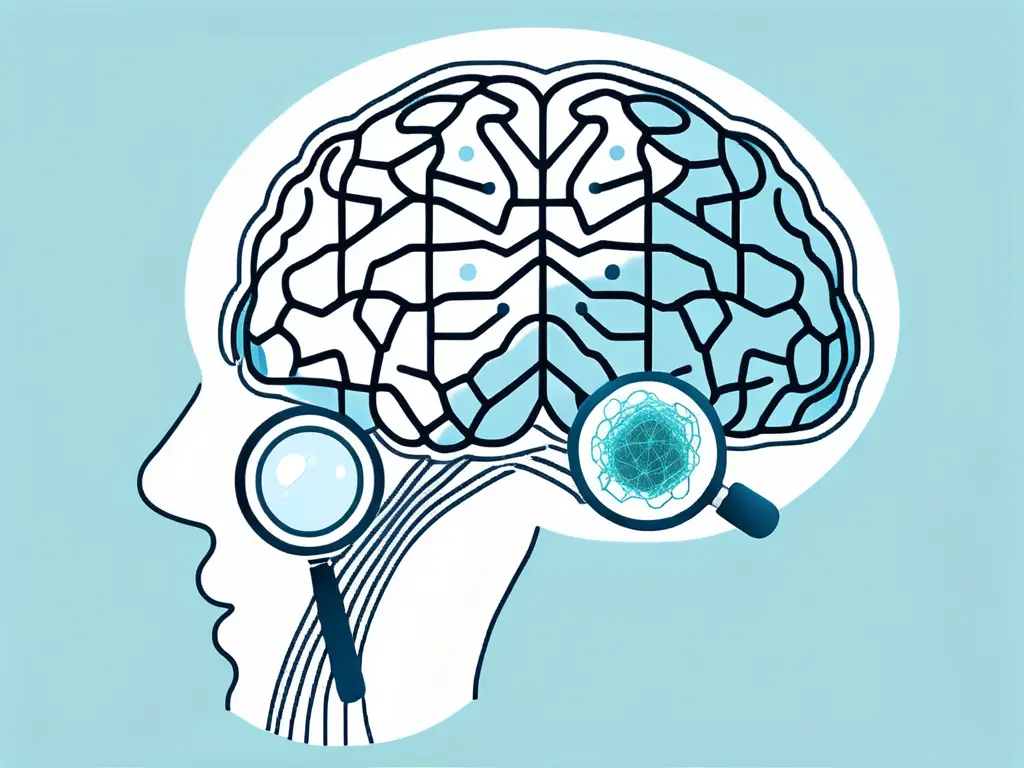Convolutional Neural Networks (CNNs) have revolutionized the field of artificial intelligence, particularly in the areas of image recognition, natural language processing, and predictive analytics. These powerful algorithms have enabled machines to perform complex tasks that were once exclusive to human intelligence. In this article, we will explore the inner workings of CNNs, their role in machine learning, their advantages, and the challenges and limitations they face. We will also delve into the future of CNNs, including emerging trends and potential applications that could further advance AI technology.
Understanding Convolutional Neural Networks
Before delving into CNN’s intricacies, it is essential to have a basic understanding of its structure. CNNs are inspired by the human visual cortex and designed to process visual data efficiently. The basic structure of a CNN consists of three main components: convolutional layers, pooling layers, and fully connected layers.

Convolutional layers are responsible for capturing the spatial relationships within an input image. They apply a series of filters known as kernels to extract meaningful features. These filters detect edges, shapes, and textures, forming a hierarchy of increasingly complex representations.
Pooling layers, on the other hand, reduce the spatial dimensions of the feature maps generated by the convolutional layers. This helps reduce the network’s computational complexity while retaining important information.
Lastly, fully connected layers connect every neuron in one layer to every neuron in the next layer, enabling high-level reasoning and decision-making. These layers condense the extracted features into a single output, making it suitable for various machine-learning tasks.
The Basic Structure of CNNs
Let’s dive a bit deeper into the basic structure of CNNs. Picture a stack of building blocks. Each block represents a layer in the network. The input layer represents the raw pixel values of an image. Each layer adds complexity and abstractness to the representations as the data flows through the network. The final output layer holds the predictions or classifications.
By chaining multiple layers together, a CNN can learn hierarchical representations that capture the intricate details of an image. These representations allow the network to identify and differentiate objects with remarkable accuracy.
Key Components of CNNs
In addition to the basic structure, several key components contribute to CNN’s effectiveness. One such component is the activation function, which introduces non-linearities into the network, allowing complex patterns to be learned.
Another crucial component is the loss function, which quantifies the difference between the predicted output and the ground truth. The network uses this information to adjust its weights and biases during training, iteratively improving its performance.
CNNs use optimization algorithms, such as stochastic gradient descent, to minimize the loss function and fine-tune the network’s parameters. These algorithms ensure the network converges to the best possible solution, maximizing its accuracy and predictive power.
How CNNs Process Information
The convolutional layers analyze the image by sliding the filters across the input and performing element-wise multiplications and additions. This process generates feature maps that highlight the presence of specific patterns or objects within the image.
The pooling layers then downsample the feature maps by selecting the maximum value (max pooling) or the average value (average pooling) within a specific region. This reduces the spatial dimensions while retaining the most important information.
Finally, the fully connected layers process the information from the pooled feature maps, making high-level predictions or classifications. These predictions are based on the learned representations and are further refined through the backpropagation algorithm during the training phase.
But how do convolutional neural networks learn to recognize objects? The answer lies in the training process. During the training phase, a CNN is presented with a large dataset of labeled images. The network learns by adjusting its internal parameters, known as weights and biases, to minimize the difference between its predicted output and the true labels of the images.
This adjustment is achieved through a process called backpropagation. Backpropagation involves calculating the gradient of the loss function for each weight and bias in the network. This gradient is then used to update the parameters to reduce the loss. By iteratively repeating this process on different batches of training data, the network gradually improves its ability to recognize objects.
It’s worth noting that CNNs can also be used for tasks other than image classification. They have been successfully applied to tasks such as object detection, image segmentation, and even natural language processing. CNNs’ versatility lies in their ability to learn hierarchical representations from input data, regardless of the specific domain.
The Role of CNNs in Machine Learning
Now that we have a solid understanding of the inner workings of CNNs let’s explore their role in machine learning. CNNs have been instrumental in solving complex tasks that were previously challenging for machines.
But what exactly makes CNNs so powerful in the field of machine learning? Let’s delve deeper into some of their applications and see how they have revolutionized various domains.
Image Recognition and CNNs
One of the most notable applications of CNNs is in image recognition. These networks have achieved remarkable accuracy rates in object detection, facial recognition, and even medical image analysis tasks.
Imagine a self-driving car with CNNs that can accurately identify pedestrians, traffic signs, and other vehicles in real-time. This capability not only enhances the safety of autonomous vehicles but also opens up possibilities for efficient traffic management.
CNNs have found their way into security systems, where they can detect and classify suspicious activities or objects. This technology has become crucial in ensuring public safety, preventing crimes, and protecting critical infrastructures.
Natural Language Processing with CNNs
In addition to image recognition, CNNs have succeeded in natural language processing (NLP) tasks. By treating words as sequences and applying convolutional operations, CNNs can capture the contextual relationships between words.
Consider sentiment analysis, where CNNs can analyze social media posts, customer reviews, or news articles to determine the sentiment behind the text. This information is invaluable for businesses to understand customer feedback, improve their products, and enhance customer satisfaction.
CNNs have shown promise in machine translation, enabling us to break down language barriers and facilitate communication between people from different linguistic backgrounds. This technology has the potential to revolutionize global connectivity and foster cultural exchange.
CNNs in Predictive Analytics
Predictive analytics is another area where CNNs have made significant contributions. By modeling the temporal dependencies within sequential data, such as sensor readings or financial time series, CNNs can predict future values or detect anomalies.
Imagine a weather forecasting system that utilizes CNNs to analyze historical weather patterns, atmospheric data, and satellite images. By accurately predicting weather conditions, we can better prepare for natural disasters, optimize agricultural practices, and improve overall disaster management.
Similarly, in finance, CNNs can analyze stock market data, identify trends, and predict future market movements. This information is invaluable for investors, traders, and financial institutions, enabling them to make informed decisions and mitigate risks.
As we can see, CNNs have become a cornerstone of machine learning, revolutionizing various domains and enabling machines to perform complex tasks with remarkable accuracy. Their ability to learn intricate patterns, extract meaningful information, and make accurate predictions has propelled them into becoming an indispensable tool in artificial intelligence.
Advantages of Using Convolutional Neural Networks
CNNs offer numerous advantages over traditional machine learning algorithms. Let’s delve into a few of these advantages:
High Accuracy Rates of CNNs
Due to their ability to learn hierarchical representations and capture complex patterns, CNNs often exhibit high accuracy rates in various tasks. Their deep architecture enables them to extract subtle details and make accurate predictions.
This accuracy is especially crucial in safety-critical applications, where even small errors can have significant consequences. By leveraging the power of CNNs, machines can match and even surpass human capabilities in specific domains.
For example, in medical imaging, CNNs have been successfully used to detect and diagnose diseases such as cancer. By analyzing large amounts of medical images, CNNs can identify subtle patterns that may not be easily noticeable to human eyes, leading to early and accurate diagnosis.
Efficiency in Data Processing
CNNs are designed to process large volumes of visual and textual data efficiently. Their hierarchical structure enables them to extract relevant features and reduce the data’s dimensionality, resulting in more efficient computations.
By utilizing convolutional and pooling operations, CNNs significantly reduce the computational overhead, making them suitable for real-time applications and systems with limited resources.
For instance, in autonomous driving, CNNs are crucial in processing real-time visual data from cameras mounted on vehicles. By efficiently analyzing the surroundings, CNNs can detect objects, pedestrians, and road signs, enabling the car to make informed decisions and ensure safe navigation.
Versatility of CNN Applications
CNNs have applications in various domains, from computer vision to natural language processing. Their versatility lies in their ability to learn from raw data and generalize to different tasks.
By fine-tuning the network’s parameters and applying transfer learning, CNN models trained on one task can be repurposed for other related tasks. This versatility saves time and computational resources, making CNNs a preferred choice for researchers and practitioners.
For example, in speech recognition, CNNs have been used to convert audio signals into text. By training on a large dataset of spoken words, CNNs can learn to recognize patterns in the audio signals and accurately transcribe them into text. This versatility of CNNs allows them to be applied in various applications, such as voice assistants, transcription services, and language translation.
Challenges and Limitations of CNNs
While CNNs have achieved remarkable success in numerous tasks, they are not without their challenges and limitations. Let’s explore a few of these:

Overfitting in CNN Models
Overfitting occurs when a CNN model becomes too specialized in the training data and fails to generalize to unseen examples. This phenomenon can lead to poor performance and inaccurate predictions.
Various techniques, such as regularization, early stopping, and data augmentation, are employed to mitigate overfitting. These techniques prevent the model from memorizing the training data and encourage it to learn meaningful representations.
For example, regularization techniques like L1 and L2 regularization add a penalty term to the loss function, discouraging the model from assigning excessive importance to any particular feature. Early stopping involves monitoring the model’s performance on a validation set and stopping the training process when the performance deteriorates, thus preventing overfitting.
Computational Requirements for CNNs
CNNs are computationally intensive, especially when dealing with large datasets and complex architectures. The training process involves numerous convolutions, multiplications, and additions, requiring significant computational resources.
This computational requirement can pose challenges, particularly for individuals or organizations with limited access to high-performance computing infrastructure. However, advancements in hardware technology and parallel processing techniques continuously alleviate this limitation.
For instance, the use of graphics processing units (GPUs) has significantly accelerated CNN training. GPUs are designed to handle parallel computations efficiently, allowing for faster training times. Additionally, distributed computing frameworks like TensorFlow and PyTorch enable the distribution of computations across multiple machines, reducing the training time for CNN models.
The Black Box Problem in CNNs
One of the criticisms leveled against CNNs is the lack of interpretability. Due to their complex architectures and large number of parameters, understanding how CNNs arrive at their predictions can be challenging.
This lack of interpretability raises concerns, especially in fields where accountability and transparency are crucial, such as healthcare or finance. Researchers are actively developing techniques to explain the decision-making process of CNNs and uncover their inner workings.
One approach to addressing the black box problem is using visualization techniques. By visualizing CNN’s learned filters and feature maps, researchers can gain insights into what the model has learned and how it processes information. Additionally, techniques like gradient-based class activation mapping (Grad-CAM) highlight the regions of an input image that contribute most to the model’s prediction, providing some interpretability.
Efforts are being made to develop explainable AI (XAI) methods specifically for CNNs. These methods aim to provide human-understandable explanations for the decisions made by CNN models, allowing users to trust and comprehend the reasoning behind the predictions.
The Future of Convolutional Neural Networks
As CNNs continue to pave the way for advancements in AI technology, it is essential to explore future possibilities and trends. Let’s dive into a few exciting areas:

Emerging Trends in CNN Research
Researchers are continuously pushing CNN’s boundaries and exploring new frontiers. One emerging trend is the integration of CNNs with other AI techniques, such as reinforcement learning and generative models.
This integration allows for more powerful and flexible systems capable of learning from limited data and generating creative outputs. For example, in robotics, CNNs combined with reinforcement learning can enable robots to learn complex tasks through trial and error, leading to more efficient and adaptable machines.
Integrating CNNs with generative models opens up exciting possibilities in the field of creative arts. By training CNNs on vast datasets of artwork, these models can generate unique and visually stunning pieces, blurring the line between human and machine creativity.
Potential New Applications for CNNs
As CNNs become more versatile and robust, new applications are emerging across various domains. One such area is healthcare, where CNNs are used for disease diagnosis, medical image analysis, and drug discovery.
Imagine a future where CNNs can analyze medical images with unparalleled accuracy, assisting doctors in detecting subtle signs of diseases at an early stage. This could potentially save countless lives and revolutionize the field of diagnostics.
Additionally, CNNs are being explored in fields such as environmental monitoring, transportation, and finance, where they can aid in analyzing complex data and making informed decisions. For instance, in environmental monitoring, CNNs can analyze satellite imagery to identify deforestation patterns, helping conservationists and policymakers take proactive measures to protect our planet.
The Role of CNNs in Advancing AI Technology
CNNs are crucial in advancing AI technology by enabling machines to understand and interpret visual and textual information. As these networks evolve, they contribute to developing intelligent systems capable of perceiving, reasoning, and interacting with the world.
With the increasing complexity of data today, CNNs provide a powerful tool for extracting meaningful insights. For example, in the field of natural language processing, CNNs can analyze large volumes of text data, enabling machines to understand and generate human-like language. This has led to advancements in chatbots, language translation, and even content generation.
By harnessing the power of CNNs, we are witnessing a paradigm shift in AI, with machines becoming increasingly capable of performing tasks once reserved for human intelligence. From self-driving cars to virtual assistants, CNNs are at the forefront of these transformative technologies, making our lives more convenient and efficient.
Conclusion
In conclusion, convolutional neural networks have revolutionized the field of artificial intelligence, paving the way for groundbreaking advancements. Their ability to process visual and textual data and their accuracy and versatility have propelled them to the forefront of machine learning. Despite their challenges and limitations, CNNs continue to push the boundaries of what machines can accomplish, and their future holds immense potential for further advancements in AI technology.
As we embrace the transformative power of Convolutional Neural Networks in advancing AI technology, we must acknowledge the importance of robust cybersecurity measures. With its unparalleled expertise in cybersecurity excellence, Blue Goat Cyber stands ready to protect your AI-driven innovations. Our veteran-owned business specializes in safeguarding critical digital assets, from advanced medical device cybersecurity to comprehensive penetration testing, ensuring your operations meet stringent HIPAA and FDA compliance standards.
Don’t let cyber threats undermine the potential of your AI applications. Contact us today for cybersecurity help and partner with Blue Goat Cyber to secure your digital ecosystem. Our tailored cybersecurity solutions and proactive approach empower your business to thrive confidently in the digital landscape. It’s time to transform vulnerabilities into strengths and secure peace of mind. Embrace the future of AI with the assurance of Blue Goat Cyber’s protection.


